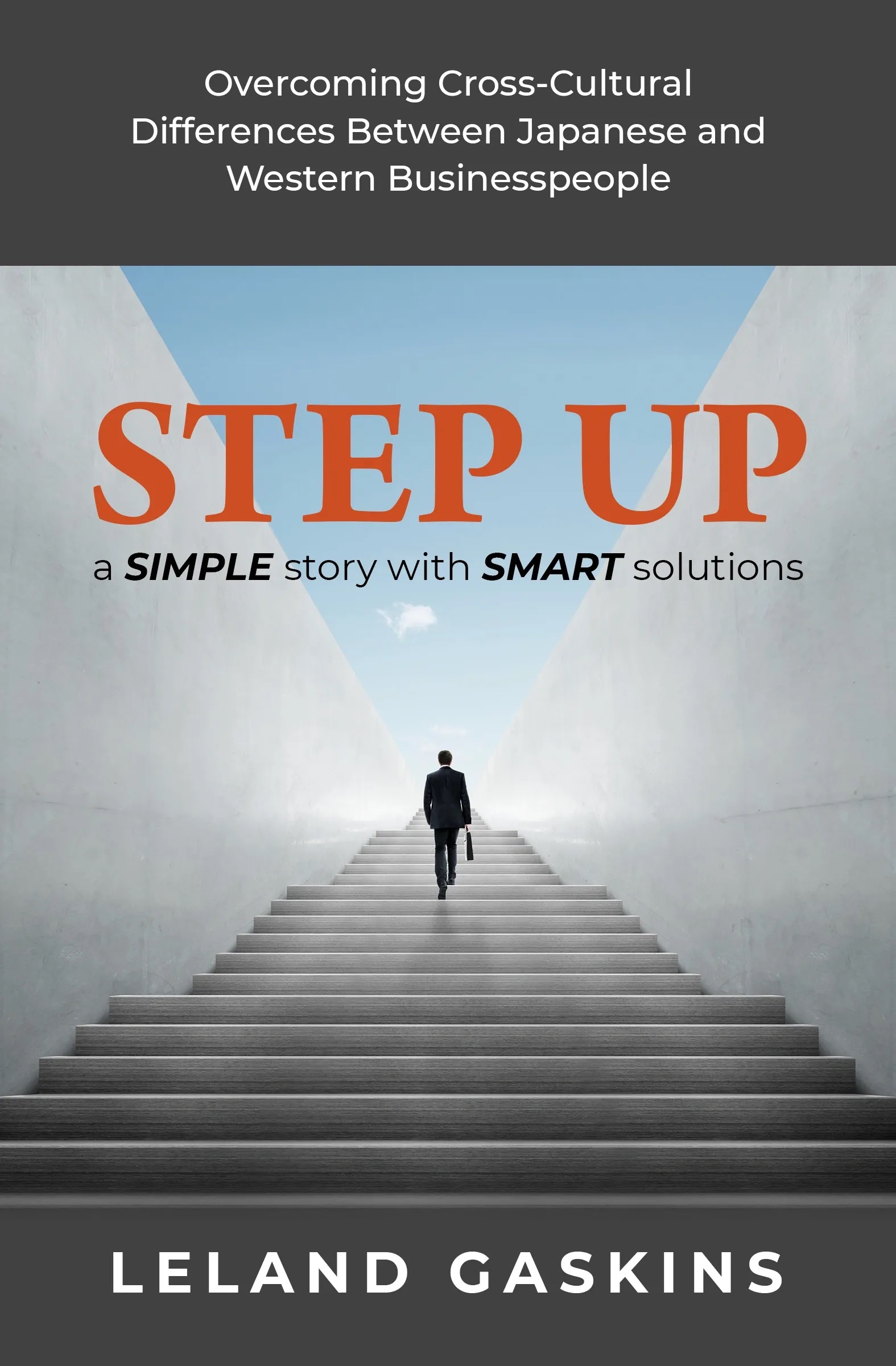How To Overcome Cultural Differences In Japan With “Step Up” By Leland Gaskins
A Guide To A Better Understanding Of The Cross-Cultural Workplace
Being aware of cultural differences between you and your colleagues or collaborators is not always enough to overcome them. In “Step Up” by Leland Gaskins, we dive into these cultural differences to acquire a new vision of the cross-cultural worspace
We’ve all been there.
We’re fully committed to our job. Maybe we even chose this company in Japan for its cross-cultural work environment. We prepare diligently for a project, using every tool we have. The execution goes well…or so we think.
Then, we learn that the boss, who is from a different culture, wasn’t satisfied. But the feedback doesn’t really help us to see what’s gone wrong. It consists of phrases like “be more results-oriented” or “be more proactive”… What does that even mean?
Cultural Differences In Japan: The Workplace Edition
This kind of frustration on the job isn’t unusual among people who work in international or cross-culture environments. Our manager asks for something we believe we’re already delivering, and we just can’t see what to do differently to satisfy him. There’s some kind of disconnect and we can’t figure out where or what it is.
In this situation, some people just keep plugging along doing as they’ve always done, hoping it will all work out. Others give up and change jobs, hoping to find a better environment elsewhere.
The Case of Japanese Business
Author Leland Gaskins suggests there’s another way to overcome these problems when it comes to cultural differences in Japan.
In his book, “Step Up: Overcoming Cross-Cultural Differences Between Japanese and Western Businesspeople,” Gaskins provides a roadmap for understanding when and why these disconnects arise and for figuring out how to work effectively in diverse environments, in spite of different values and different communication styles.
Overcoming Cultural Differences In Japan Through Fiction
One feature of Gaskins’s book that makes it appealing is that it is presented as a story, making it “real”, more palpable, rather than just theoretical.
Hiroshi, a young family man with plans and ambition, took the chance of a job with a foreign company and is floored when his American boss tells him his work is disappointing and his future prospects are limited. With the help of Sheri, an American colleague who offers him informal coaching, Hiroshi slowly unravels the situation and figures out what he can do differently at work to turn his career fortunes around.
Of course, the real message of the book lies in the way Hiroshi and Sheri break down the feedback from the boss. Together, they figure out how to overcome the differences in their cultural values so that Hiroshi’s work can meet his boss’s expectations.
On Western And Japanese Cultural Differences
In the book, Hiroshi and Sheri begin by compiling a list of “cultural differences” that compares Japanese and Western approaches to various aspects of work and problem-solving.
| Western Work Culture | Japanese Work Culture |
| Think as an individual | Think apart of a team, group |
| Believe in equality, autonomy | Respect hierarchy |
| Accept reasonable risk | Avoid risk as much as possible |
| Need to be fast, efficient, concise | Need to be careful, thorough, precise |
| Accept “good enough” | Need to be perfect |
| Okay to break some rules | Respect rules, procedure, precedent |
| Value outcome over process | Value process as well as outcome |
| Direct, clear communication | Indirect, vague communication |
| Value creativity | Value diligence, consistency |
Without saying that one culture or set of values is better than the other, over subsequent chapters of the book Hiroshi and Sheri discuss each piece of the boss’s feedback—things like “speak up” and “be more results-oriented“—, working together to figure out what the boss meant.
Analyzing Cultural Differences In Order To Find The Best Solution
They first determine which cultural difference is implicated in the issue. Then, they talk through how each culture approaches it, using a process chart that examines the importance to each side of the way they are accustomed to approaching a situation. Finally, they examine how, in light of that, Hiroshi might be able to adjust his work style to be more successful with his boss.
These conversations bring out both the American and the Japanese values and approach, providing information useful to readers from both cultures. However, since the story is highlighting Japanese cultural specifics, it can be applied to many other cultures with some adjustment.
Self-Analysis Is The Key
Another practical tool used by the pair in their problem-solving conversations is a decision tree that Hiroshi uses to determine whether the potential solution he has identified can actually be implemented. More specifically, this tree is assessing how Hiroshi can adjust himself to make his boss happy.
While this may sound a bit unfair—poor Hiroshi has to do all the changing in this scenario—, each of us only has control over our own actions. Hiroshi’s recognition and willingness to make changes, even compromise to his own cultural mores, is really the only avenue available to him if he wants to succeed without changing jobs.
An Insightful How-To Guide
Although Gaskins’ book will have particular appeal to Japanese readers, the insights it contains can also be applied in reverse by Westerners—especially Americans.
The explanations Hiroshi gives to Sheri for why he and his team operate as they do—and some of the things he thinks but doesn’t say out loud to Sheri—will be enlightening, particularly to any Japan neophyte.
At the same time, the collection of these Japanese work values in a single place, and their presentation in this story narrative, is useful even for Westerners who’ve been in Japan a while. Moreover, it may allow some Western managers to reinterpret their experiences and make changes to their management style and bring out the best in Japanese members of their team.
This book aims to empower anyone working in a cross-cultural environment to thrive and succeed in that dynamic and intriguing working world. And it does so in a readable, entertaining fashion.















Leave a Reply